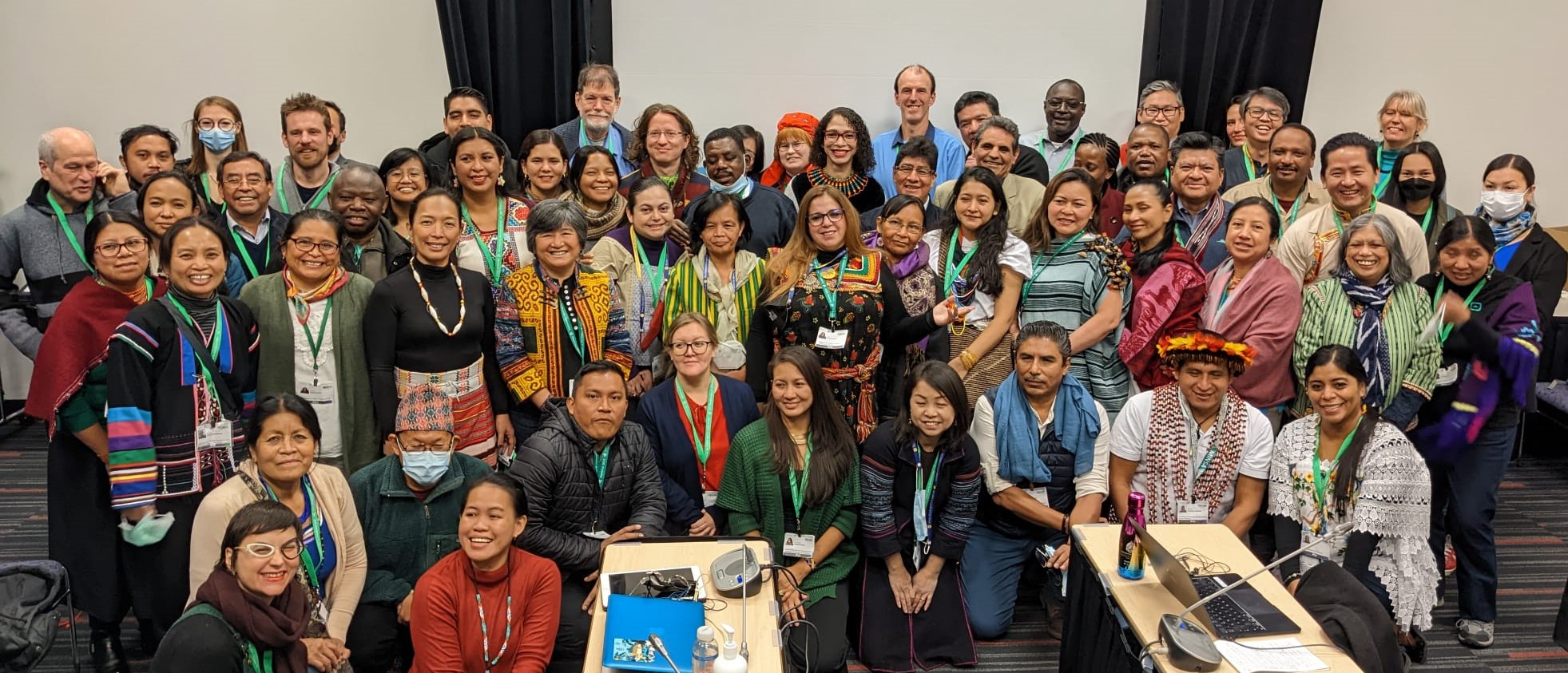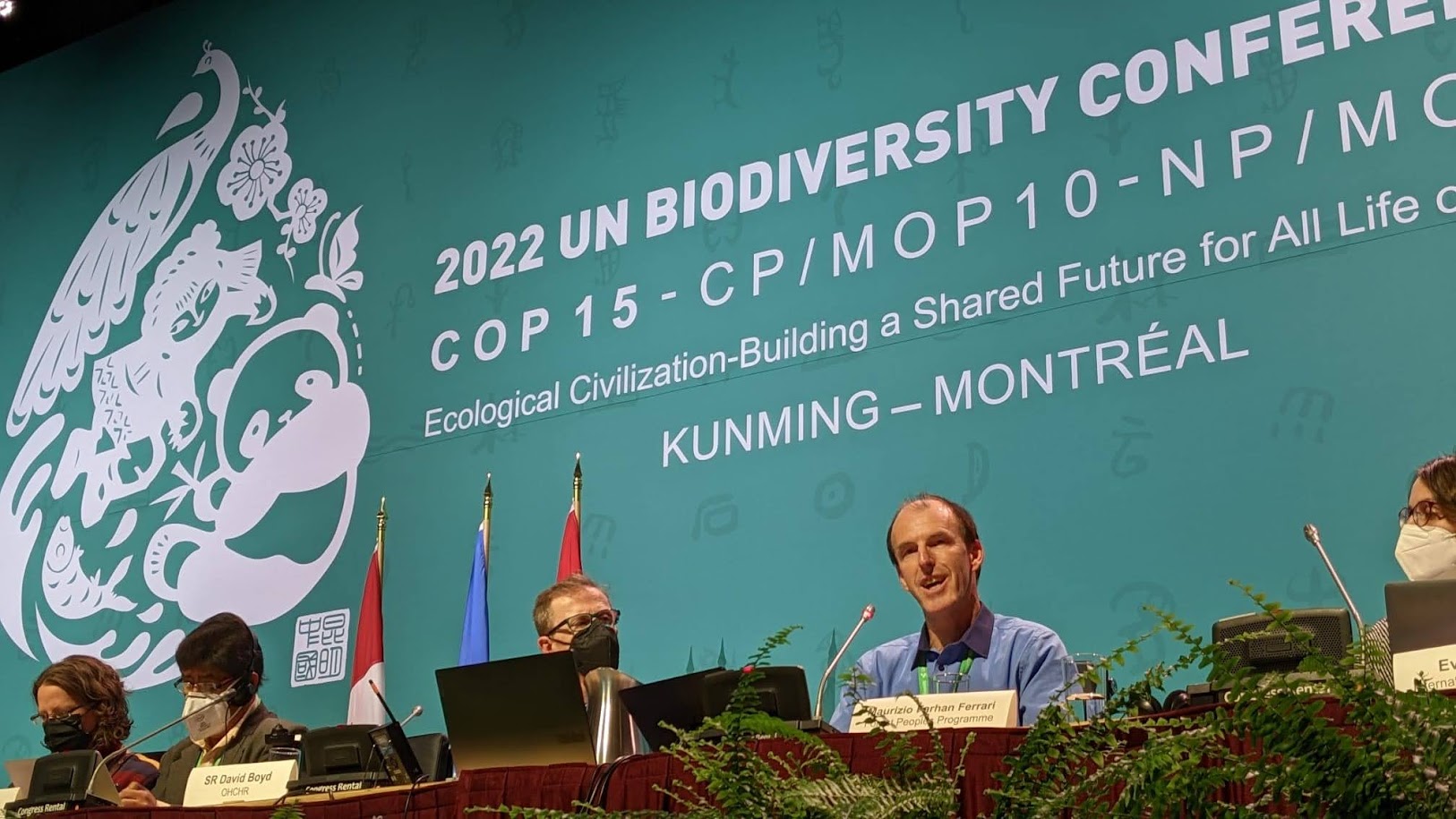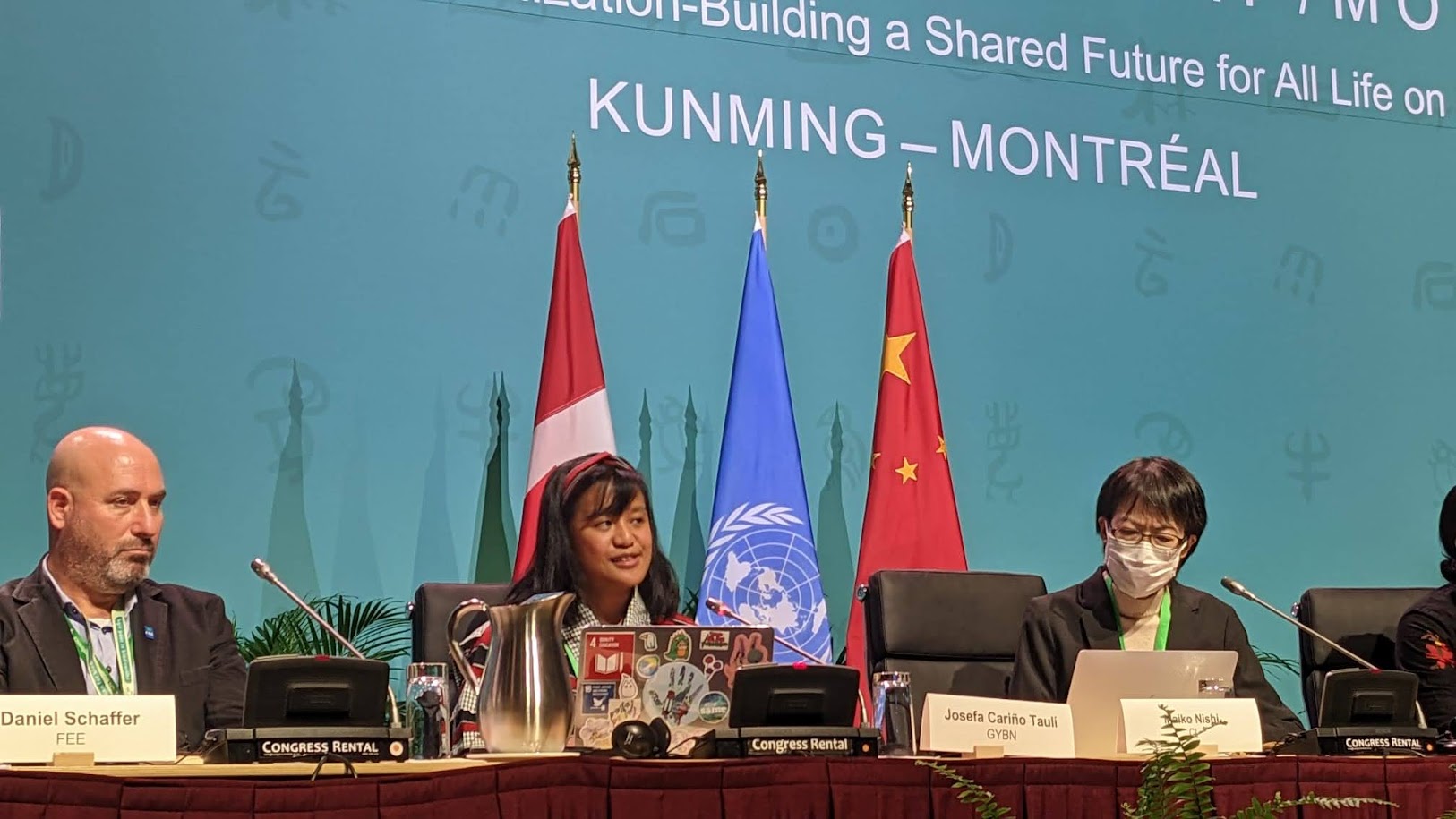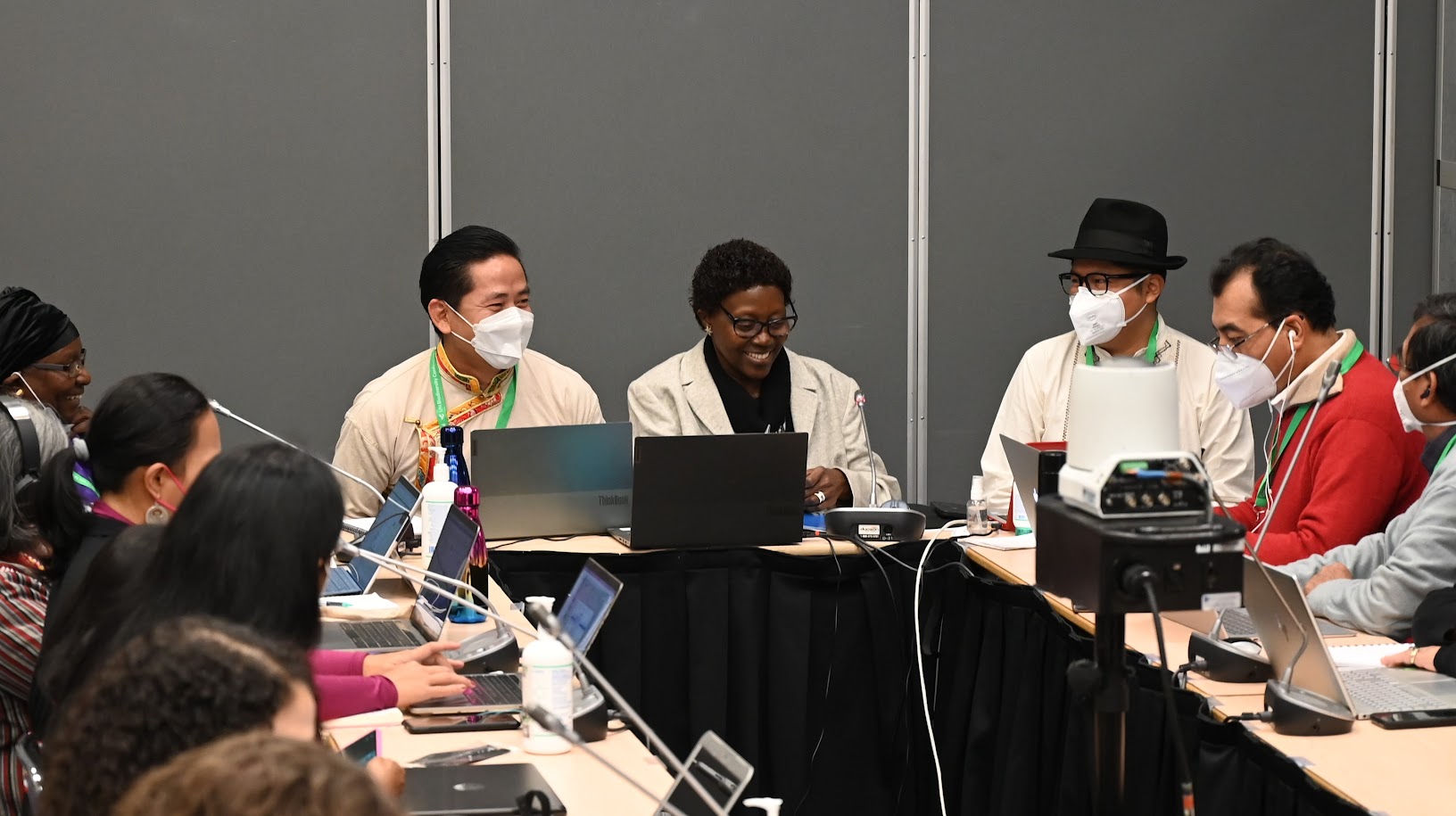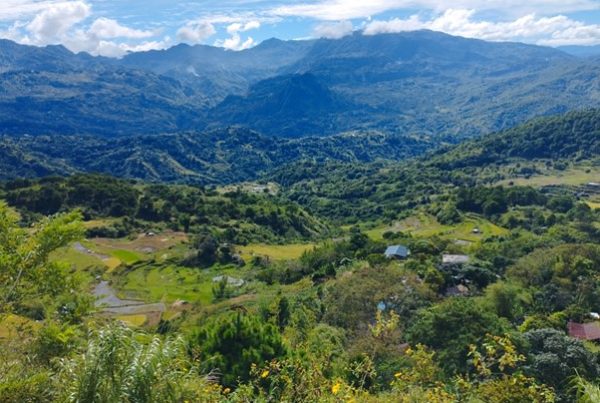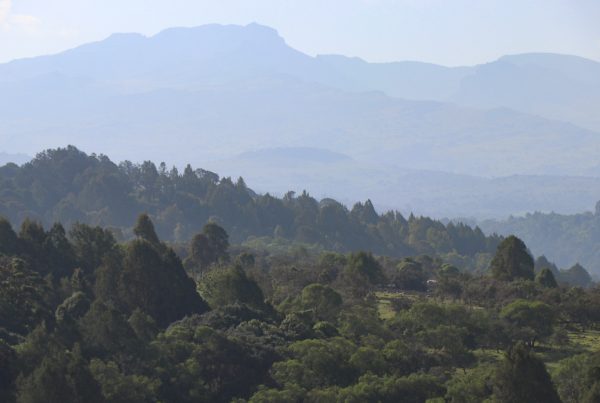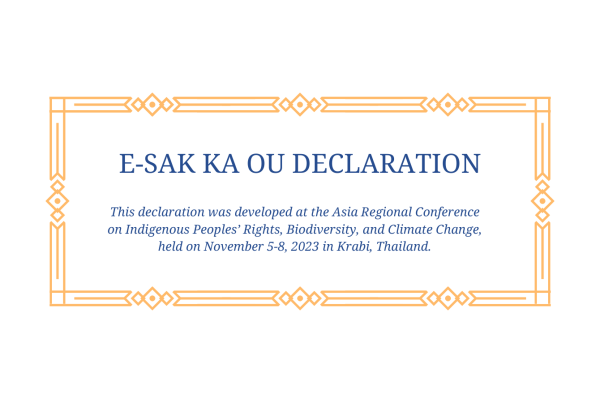During UN Convention on Biological Diversity’s COP15 meeting in Montreal, December 2022, representatives from Forest Peoples Programme (FPP), UNEP-WCMC, Indigenous Information Network (IIN), The Autonomous Territorial Government of the Wampis Nation (GTANW), Asia Indigenous Peoples Pact (AIPP) and IMPECT all participated.
Global and local project partners supported the International Indigenous Forum on Biodiversity (IIFB), working to ensure that indigenous peoples and local community rights and contributions to conserving and sustainably using biodiversity are recognised and included in the Post-2020 Global Biodiversity Framework.
The Global Biodiversity Framework
In December 2022, the Conference of the Parties to the UN Convention on Biological Diversity (CBD) reached a new global biodiversity agreement called the Kunming-Montreal Global Biodiversity Framework. The text was negotiated over four years and demonstrates potentially transformative shifts in the way environmental policymaking is being approached. It represents a significant milestone in global efforts to address escalating rates of biodiversity loss and included the adoption of a monitoring framework and mechanisms for planning, reporting, and review.
A foundational shift in recognising human rights
Parties were much more welcoming of Indigenous Peoples proposing text – a testament to the status they have achieved in the Convention and to the decades of work to carve out this space.
The introductory text to the agreement (called ‘considerations for implementation’) commits all actors to implementing the framework with a human rights-based approach. This is a foundational shift in commitments under international environmental law, recognizing the intrinsic relationship between realizing human rights and effectively responding to the biodiversity crisis. With its new commitment to the principle of inter-generational equity, this agreement recognizes the responsibilities that we all have to future generations on this earth to address biodiversity loss now. It also directly and unequivocally recognizes the contributions of indigenous peoples and local communities over generations to retaining and managing biodiversity on their territories and the importance of respecting the fundamental rights that underpin these contributions.
The Kunming-Montreal agreement was among a series of decisions taken by the Conference of the Parties to the CBD during its 15th session (COP15) in Montreal, Canada. The text was developed over five meetings of the negotiating teams within the Open-Ended Working Group on the ‘post-2020 global biodiversity agreement’ (as it was previously known). The active and impactful engagement of the International Indigenous Forum on Biodiversity (IIFB) was significant throughout the negotiations, and the resulting text reflects many (but not all) of their expressed priorities. Similar engagement by the youth caucus, through the hard work of the Global Youth Biodiversity Network, and the women’s caucus, through Women 4 Biodiversity, and other human-rights focused groups including the Human Rights and Biodiversity Working Group, helped to ensure that improved attention was paid to human rights.
Impact reliant on implementation
Overall, the Kunming-Montreal agreement is an international multilateral agreement and as such its impact will depend on how it is implemented. The vast weight of responsibility for implementation lies at the national and local levels, where adequate and appropriate resourcing needs to be found and provided to the right actors. Inadequate and damaging policies and laws need to be identified and reformed, and the enabling and enriching power of local actions and the leadership of indigenous peoples and local communities need to be championed and supported. There are opportunities in this new agreement to support transformative action towards change, but the hard work lies ahead.
Looking ahead
We would like to flag here a few important policy and decision making spaces at the global level of interest to those working on conservation and sustainable use of biodiversity.
SBSTTA-26 (13-18 May, Kenya)
This is a meeting of one of the subsidiary bodies (sub-bodies) to the Convention on Biological Diversity (CBD) that will prepare decisions and advice on scientific, technical and technological aspects relevant for the implementation of the Kunming-Montreal Global Biodiversity Framework. On the agenda of this meeting is the indicators that will be used to measure progress in the implementation of the Global Biodiversity Framework, including reviewing and updating the Traditional Knowledge indicators. The meeting will also cover marine and coastal biodiversity, biodiversity and health, and issues relating to Living Modified Organisms (LMOs).
For more information about this meeting (along with a full annotated agenda): CBD SBSTTA-26 Agenda
SBI-4 (21-29 May, Kenya)
This is a meeting of one of the subsidiary bodies (sub-bodies) to the Convention on Biological Diversity that reviews the implementation of the CBD’s decisions and recommendations. This meeting will review the progress in national biodiversity target setting and National Biodiversity Strategies and Action Plans (NBSAPs), discuss resource mobilisation and financial mechanisms, as well as capacity building and development for parties under the CBD and its protocols.
For more information about this meeting (along with a full annotated agenda): CBD SBI-4 Agenda
The Transformative Pathways project can serve as an important opportunity to shape the revision of the national biodiversity strategy and action plans that will be taking place over the coming years.
Read more via Forest Peoples Programme: Unpacking the Kunming-Montreal Biodiversity Agreement: Identifying key advances and making them work
Tipo: Artikulo Rehiyon: Lubong
Tema: Ti konservasion nga idadaulo ti komunidad; Dagiti internasional a proseso; Dagiti karbengan iti daga ken rekurso; Tradisional ken lokal a kaammuan
Partner: Forest Peoples Programme (FPP), UNEP-WCMC, Indigenous Information Network (IIN), The Autonomous Territorial Government of the Wampis Nation (GTANW), Asia Indigenous Peoples Pact (AIPP) and IMPECT
Tags: Convention on Biological Diversity (CBD); COP15
